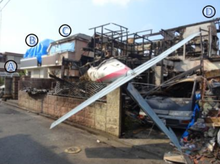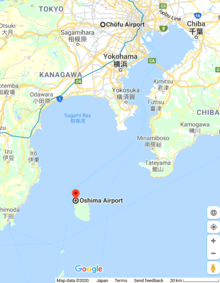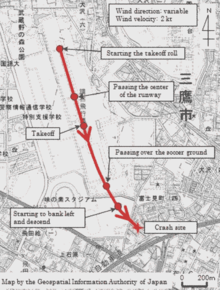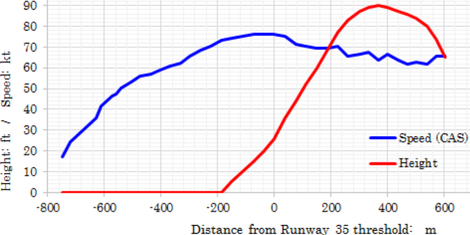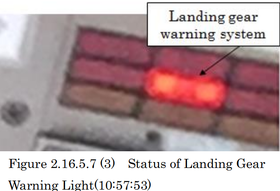2015.07.26.Crash
2015.07.26.Crash referes to catastrophe of
small airplane Piper PA-46-350P, registered JA4060,
near the Chofu airport, soon after take-off
Few strange details from the original reports [2][1] about that crash are mentioned below.
Overview
The report [1] suggests the following summary:
On Sunday, July 26, 2015, at around 10:58 Japan Standard Time (JST: UTC + 9hrs:unless otherwise stated, all times are indicated in JST using the 24-hour clock), a privately owned Piper PA-46-350P, registered JA4060, crashed into a private houseat Fujimi Town in Chofu City, right after its takeoff from Runway 17 of Chofu Airport. There were five people on board, consisting of a captain and four passengers.
The captain and one passenger died and three passengers were seriously injured. In addition, one resident died and two residents had minor injuries.The aircraft was destroyed and a fire broke out. The house where the aircraft had crashed into were consumed in a fire and neighboring houses sustained damage due to the fire and other factors.
Destination was Oshima Airport.
Speed and altitude
Figures as left show reconstruction of trajectory of the aircraft before the crash, images are from the same report [1].
The red curves shows altitude of the aircraft versus time (JST) and versus distance from the runway threshold. Following the old tradition (established before discovery of the rotational symmetry of the space), the length is measured in meters, while altitude is measured in foots.
Figures show, that at 40:57:45, the aircraft passes the threshold at altitude 25 ft with seed 87 knots.
Figure 1.16.5.4, at page 60 of the same report, indicates that, approxmately at this moment, namely, at 10:57:50, the landing gear is retrtacted. Perhaps, the retracting of the landing gear takes of order of 5 second; so, the deviation of 5 seconds is not significant.
Then, the aircraft seems to loss the control; the pitch and speed become chaotic. The shaking leads to loss of speed, and the aircraft falls down to the living blocks. In the report, the coincidence of the retracting gear and loss of the control is not discussed. In the next section, this coincidence is discussed; the lost of control is interpreted as result of some defect or mechanism that is switched on at the retraction of the landing gear.
Hypothesis
The problem of the aircraft reveals at the retracting of the landing gear.
The figures indicate, that, after an attempt to retract the landing gear, the aircraft losses its performance; both speed and pitch become chaotic. In addition, the speed, instead of to increase (due to reduction of the aerodynamic drag of the wheels), reduces.
Figure 2.16.5.7(3) at page 63 confirms, that the landing gear was not successfully retracted at least until 10:57:53. (After the retraction of the landing gear, the lighting of the gear indication is supposed to be off.)
At this moment, the aircraft lost its performance, losing both speed and altitude.
The coincidence above could be interpreted with hypothesis, that some bad device had been installed in the place, where the wheels of the aircraft are supposed to be folded. The squeezing had affected the cables from the cabin to the tail, and leaded to the lost of control.
Perhaps, the pilot tried to regain the control, accelerating the aircraft in various directions, but the reserve of speed and altitude was not sufficient to allow the pilot to release the landing gear back, in order to regain the control of the aircraft and to perform the emergency landing at the same airstrip.
The hypothesis above significantly differs from the interpretation in figure 3.5.3. from the Report. According to that figure, the pilot took-off a hundred meters before the optimal position (and before he got the speed sufficient for the safe launch.)
Gallery
 page 60, Figure 2.16.5.4 Estimated Flight Route.
page 60, Figure 2.16.5.4 Estimated Flight Route.
References
- ↑ 1.0 1.1 1.2 1.3 2017.07.18. https://www.mlit.go.jp/jtsb/eng-air_report/JA4060.pdf AA2017-4AIRCRAFT ACCIDENTINVESTIGATION REPORTPRIVATELY OWNEDJ A 4 0 6 0 July 18, 2017 The objective of the investigation conducted by the Japan Transport Safety Board in accordance with the Act for Establishment of the Japan Transport Safety Board and with Annex 13 to the Convention on International Civil Aviation is to determine the causes of an accident and damage incidental to such an accident,thereby preventing future accidents and reducing damage. It is not the purpose of the investigation to apportion blame or liability.Kazuhiro NakahashiChairmanJapan Transport Safety BoardNote:This report is a translation of the Japanese original investigation report. The text in Japanese shall prevail in the interpretation of the report.// CRASH AFTER TAKEOFFPRIVATELYOWNEDPIPER PA-46-350P, JA4060CHOFU CITY, TOKYO METROPOLITAN, JAPANAT AROUND10:58 JST, JULY 26, 2015July 7, 2017 Adopted by the Japan Transport Safety Board Chairman Kazuhiro Nakahashi// MemberToru Miyashita// MemberToshiyuki// Ishikawa MemberYuichi// Marui MemberKeiji TanakaMemberMiwa Nakanishi ..
- ↑ 2017.07.18. https://www.mlit.go.jp/jtsb/aircraft/rep-acci/AA2017-4-1-JA4060.pdf AA2017-4航 空事 故 調 査 報 告書 I 個人所属 パイパー式PA-46-350P型 JA4060 墜落 AA2017-4航 空事 故 調 査 報 告書I 個人所属 パイパー式PA-46-350P型 JA4060 墜落 平成29年7月18日運 輸 安 全 委 員 会Japan Transport Safety Board // 本報告書の調査は、本件航空事故に関し、運輸安全委員会設置法及び国際民間航空条約第13附属書に従い、運輸安全委員会により、航空事故及び事故に伴い発生した被害の原因を究明し、事故の防止及び被害の軽減に寄与することを目的として行われたものであり、事故の責任を問うために行われたものではない。 運 輸 安 全 委 員 会 委 員 長 中 橋 和 博
